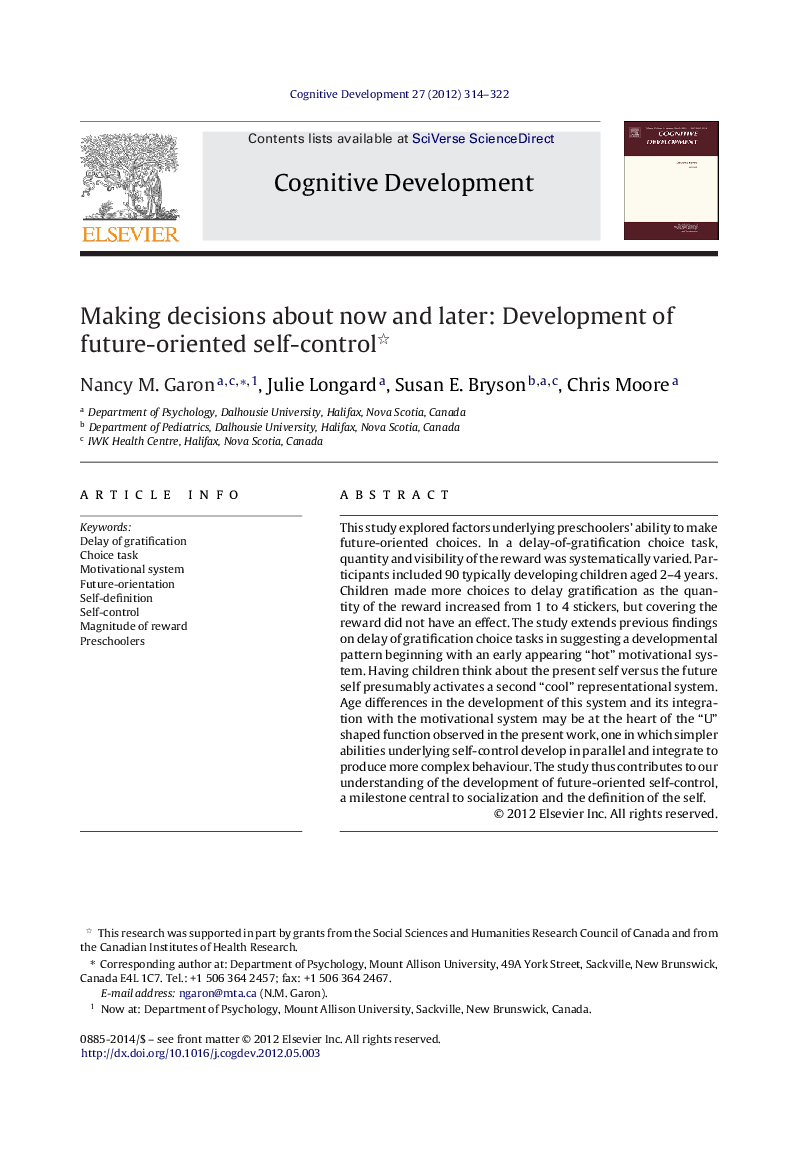| Article ID | Journal | Published Year | Pages | File Type |
|---|---|---|---|---|
| 916569 | Cognitive Development | 2012 | 9 Pages |
This study explored factors underlying preschoolers’ ability to make future-oriented choices. In a delay-of-gratification choice task, quantity and visibility of the reward was systematically varied. Participants included 90 typically developing children aged 2–4 years. Children made more choices to delay gratification as the quantity of the reward increased from 1 to 4 stickers, but covering the reward did not have an effect. The study extends previous findings on delay of gratification choice tasks in suggesting a developmental pattern beginning with an early appearing “hot” motivational system. Having children think about the present self versus the future self presumably activates a second “cool” representational system. Age differences in the development of this system and its integration with the motivational system may be at the heart of the “U” shaped function observed in the present work, one in which simpler abilities underlying self-control develop in parallel and integrate to produce more complex behaviour. The study thus contributes to our understanding of the development of future-oriented self-control, a milestone central to socialization and the definition of the self.
► Children increased their choices to delay gratification as the quantity of the reward increased. ► Occluding the reward from view did not increase children's choices to delay gratification. ► 2-Year-olds tend to focus on quantity and choose the largest reward, irrespective of time. ► 3-Year-olds tend to choose wisely for the future as long as the needs of the present are not in conflict. ► 4-Year-olds tend to choose wisely for both the present and future self.
